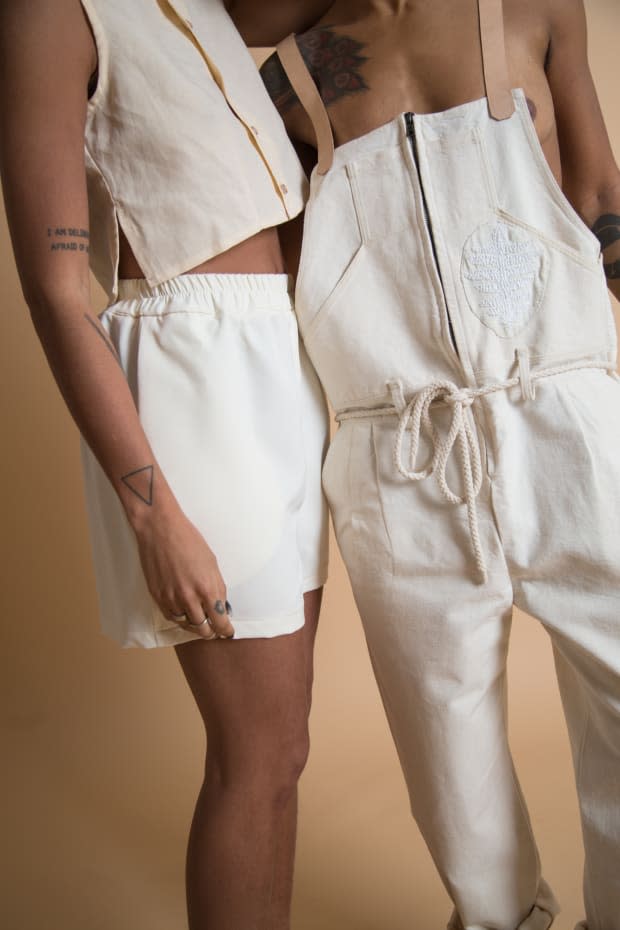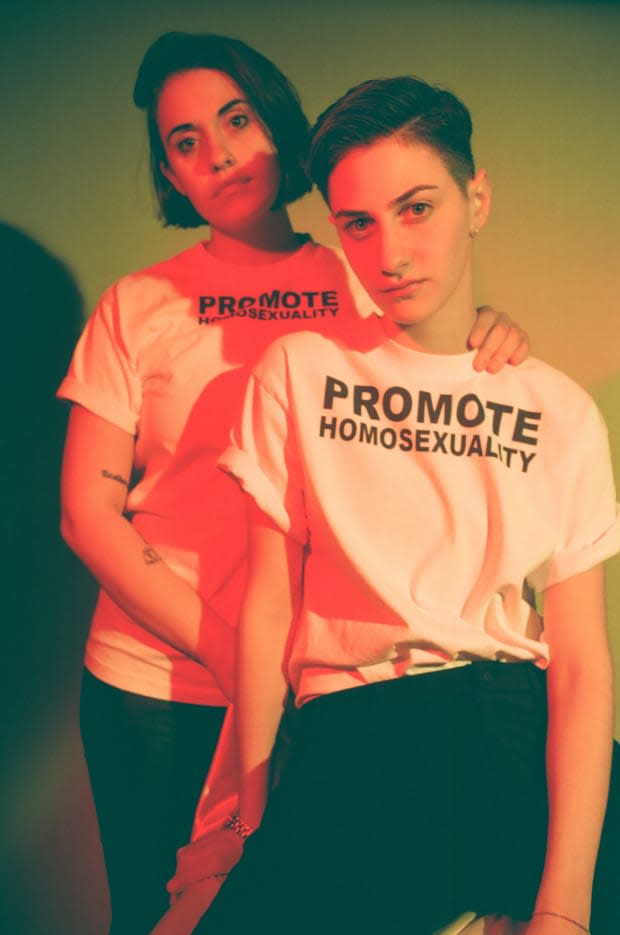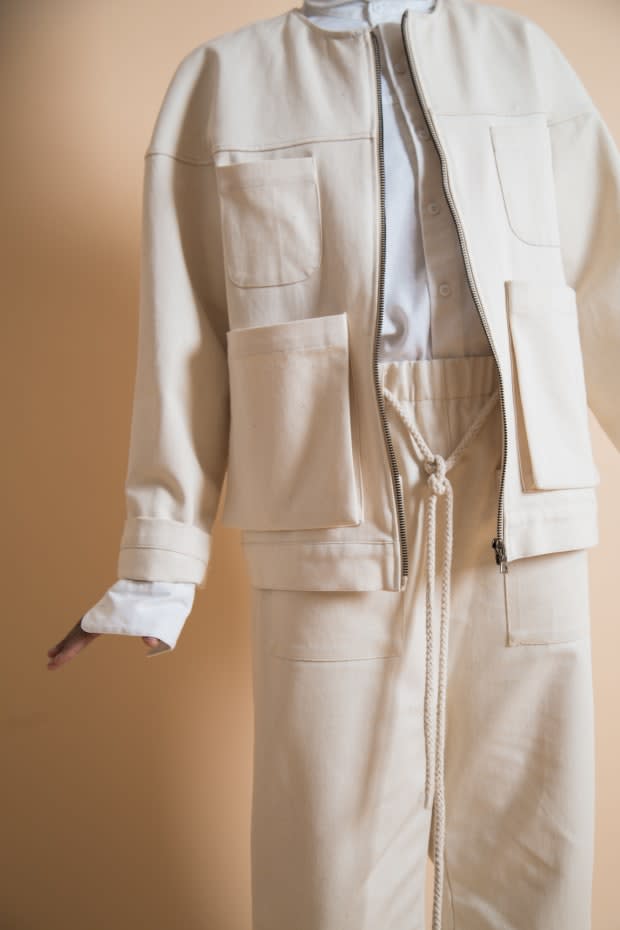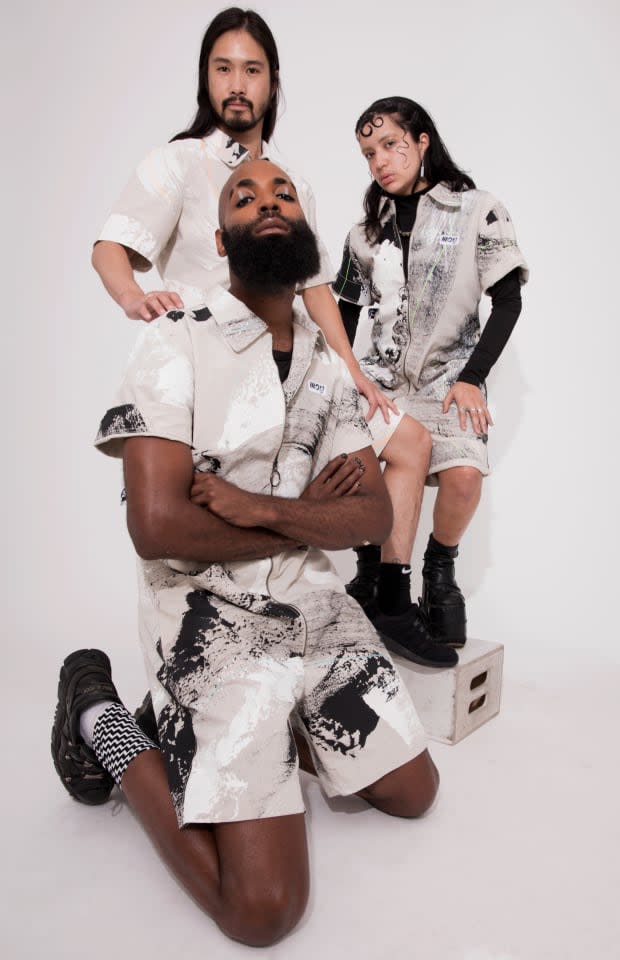These Brands Are Tackling Both Sustainability and Queerness Through Clothes
Meet Willie Norris Workshop, Salt and Hecha/做.

Discussions around sustainability and queerness are slowly growing in the fashion industry, but not many mainstream brands are considering both issues when producing collections and products. However, a new group of emerging brands are tackling these matters at the same time, taking a more holistic view of fashion design by creating garments that are not only better for the planet, but challenging the gender binary.
Here, we highlight three labels to watch that are addressing the barriers of the industry since the day they launched.
Willie Norris Workshop

"The message I wanted to convey [through clothing] was too urgent not to start," says New York-based designer Willie Norris, who launched his brand via a Kickstarter campaign at the end of April with a series of T-shirts that say "Promote Homosexuality." The brand was 142% funded upon the end of its campaign in May, which will help go towards the inaugural Willie Norris Workshop runway show at La Mama Galleria in New York, taking place on June 13.
Related Articles
How I Shop: Author and Activist Jacob Tobia
What's Behind the Rise of Upcycled Garments?
These Gender-Neutral Labels to Watch Provide Inclusive Communities Through Clothes
Currently the menswear design director at Outlier, Norris has previously worked for Zero + Maria Cornejo and Isaac Mizrahi. Desiring to create a fashion brand that is holistically and intentionally queer — not just queer by association — the creative believes, "It is one thing to have a queer person as the face of a brand or as a brand ambassador. It is another thing entirely to have a payroll full of diverse queer people working on a brand at every possible level."
Accordingly, Willie Norris Workshop offers queer clothes for queer bodies by a queer designer who has founded his business on the idea that queer entrepreneurship is a means of defense. "Supporting queer people and causes through this business, whether that is via employment, sponsorship or simply making clothes and content that make people feel seen, is the most important thing to me," says Norris.
When it came to launching his brand, Norris did not want to design with a specific gender in mind but instead approaches his practice with a queer sensibility. Though this concept can be challenging for the fashion industry, whose main source of categorization is broken down into "men's" and "women's," Norris says his brand message is current because it answers the question of what queer fashion can look like: "The answer to this often has very little to do with gender."
Beyond this, sustainability plays a key factor in his brand ethos as all of the T-shirts are either printed on repurposed tees or made to order on responsibly-produced blank tees, which significantly cuts back on overstock. The collection premiering in June will be made entirely from deadstock fabric, re-purposed garments or a combination of the two while all of the production will be done in factories that Norris has long-standing relationships with the city's Garment District.
Purposely organizing the runway show in the middle of NYC Pride Month − an occasion in which many corporations have been capitalizing on or tokenizing queerness in recent years − Norris says, "I want to use this event as a way to show how to truly lift queer people up through business."
Salt

Auston Bjorkman and Jessie Levandov, partners and co-founders of Salt, make versatile, comfortable and elegant clothing for all genders and bodies using ethical and sustainable practices and materials. The Brooklyn-based emerging fashion brand, which launched out of the duo's living room, is inspired by the rugged simplicity of workwear and the delicate craftsmanship of handmade textiles.
Coming from distinct creative backgrounds — Levandov is a filmmaker and a jewelry and textile artist while Bjorkman is a high-end streetwear designer — Salt is a combination of Bjorkman's masterful tailoring with Levandov's penchant for organic, sculptural and mixed-media textiles. After showing at the Dapper Q runway show during New York Fashion Week at the Brooklyn Museum in 2017, they decided to design a full line together.
Salt's range is comprised of jumpsuits, bomber jackets with utility pockets, overalls and more made entirely by designers and artisans in New York City, specifically a South Brooklyn-based, WOC-owned factory that Bjorkman has worked with for years through his tenure at Sir New York. Going one step further, Levandov and Bjorkman prioritize connecting directly with its audience in ways that reflect, lift up and serve the diverse LGBTQ community they belong to through Salt's pop-up shops and runway shows, as well as working with models and artists who identify as queer, trans and gender non-conforming.
"In this era of mass production, people have lost a sense of connection to how the things we use and wear are made, and to the artisans who make them," says Bjorkman and Levandov. According to the designers, as the industry tends to rely on wasteful, toxic production systems and exploitative labor practices, they are attempting to do things in ways that disrupt outdated modes of production — by producing locally in New York, working with small female-owned manufacturing businesses and creating small runs or products direct for consumers.
Hecha/做

With such a fast fashion cycle these days, trends appear and disappear as soon as they surface, making it harder and harder for garments to have lasting meaning. In reaction to this, clothing brand Hecha/做 aims to inject context and value back into apparel by approaching things with empathy and recognizing that everything and everyone has value.
Co-founders Ting and Luz operate with attention to ethical and environmental sustainability while collaborating with peers to provide greater visibility for their communities. Together, they create "gender-flexible," painted utilitarian garments, such as an oversized denim-style jacket, a short wrap skirt and overalls. The duo take time to release their designs slowly while also partnering with other artists and creatives. In this way, they hope to create conversational platforms for human connection, collaboration and communal support through Hecha/做.
In fact, the brand's name is a literal representation of its founders and ties to their cultural backgrounds and origin: Hecha is the feminine form of "made" or "created" in Spanish, while 做 is the Chinese character of "to make" or "to produce." Brought together by a shared interest in dance music, Ting and Luz first met in 2015 at a rave. "It was in these environments that we began to discuss our desires to create garments that would match our personal needs and lifestyles," says Ting. "We knew that these pieces needed to be adaptable to different situations for utility and convenience, focusing on the importance of being able to go from an office space to a warehouse, from day into night."
The designers agreed early on that they didn't want to feed into the broken fashion system and that Hecha/做’s function would be one of ideological reverse engineering, focused on transparency and the restandardization of industry norms. "Given the lack of a consistent definition of sustainability, we've taken a more macro-view and consider all aspects along the production chain in order to define our practices," says Luz.
For example, using a hemp-based composite, which is gentle on the earth and returns 60 to 70% of nutrients back to the soil, Hecha/做’s fabric requires four times less water than cotton. A recycled polyester fabric that Ting and Luz use also reduces environmental pollution, cutting back on fossil fuel and energy consumption, as well as decreasing carbon dioxide emissions. The ink that's used to paint and screen-print the fabric is a water-based, non-toxic formula.
Another consideration is the ways most brands rely on gender-based categorization or use under the catchall term "unisex," which often ends up being menswear silhouettes or over-sized garments to attempt a neutral aesthetic. "Because we feel that the idea of neutrality is subjective and ultimately indefinable, we are more interested in offering an opportunity for flexibility by creating garments that allow for adaptability and choosing not to label them as part of a specific category," says Ting.
Adds Luz, "We believe the wearer should be able to bring their own idea of gender and how they want to represent themselves in the way they style our garments." Out of this, they've incorporated adjustable straps, ties, extra panels and multiple buttons to areas of the garments where there is the most variation in body size or shape as a way to increase inclusivity, adaptability and encourage customization.
Sign up for our daily newsletter and get the latest industry news in your inbox every day.
